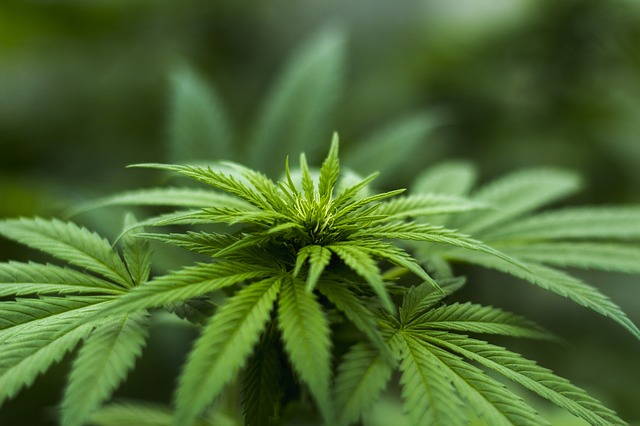
Image Source: Pixabay
In today’s article, I’d like to show you the most important cannabinoids together with their health benefits. Cannabinoids were totally unknown substances just until recently. They have a huge impact on the proper functioning of our body, without them, people would have difficulty coping with pain, fighting diseases, regulating emotions and with many other body functions. When scientists discovered that cannabinoids contained in cannabis imitate cannabinoids produced by the human body, a completely new era of medical cannabis came.
What are cannabinoids?
The most famous cannabinoids include THC and CBD. These are naturally occurring compounds. The human body, however, produces its own cannabinoids, known as endocannabinoids. They react to various internal and external stressors. They move in the endocannabinoid system, reacting to threats to the human body.
They play a key role in the immune system and our mental well-being. Regardless of the cause, they constantly search for the source of the problems by activating various endocannabinoid receptors (mainly CB1 and CB2). Endocannabinoids together with the CB receptors act like keys to various locks in our bodies. By working together, they create an endocannabinoid system. (See also: Top 3 Cannabis Strains for Insomnia Treatment)
There are also cannabinoids found in cannabis. They are called phytocannabinoids (of plant origin). Later in this article, the term “cannabinoids” will be used to describe compounds derived directly from plants. Interestingly enough, cannabinoids from cannabis imitate those found in the human body. Thanks to many studies we now know that they react with the endocannabinoid system in a similar way.
There are many different cannabinoids. Each of them has a different influence on our endocannabinoid system. Some of them relieve pain, others relieve the course of psoriasis, others help in the fight against cancer cells and others help fight depression. (See also: CBD Oil: The Pros and Cons Of It For Your Health)
10 best-known cannabinoids
Research on cannabinoids is still ongoing. Right now at least 545 compounds have been identified in Cannabis plants, 113 of which are considered to be phytocannabinoids. Phytocannabinoids are naturally occurring cannabinoids found in the cannabis plants. In today’s article, we will discuss these cannabinoids: THC, CBD, CBG, CBC, CBN, CBL, CBE, THCV, CBDV and CBT. So, let’s get this show on the road, shall we?
1. THC – tetrahydrocannabinol
THC is a cannabinoid that causes euphoria and stimulation. It’s considered to be a psychoactive agent. Due to these characteristics, it is responsible for all legal problems related to cannabis in the 20th century. THC, unlike other cannabinoids, is directly linked to the CB1 receptor. This receptor is concentrated in the brain, central nervous system and around important body organs. Particularly high THC concentrations have a significant effect on the CB1 receptor.
Health properties:
THC, which has a strong effect on the CB1 receptor, has a huge impact on pain relief. If you smoke cannabis, you are less likely to take painkillers. THC also helps to reduce chemotherapy pain and neuropathic pain. This compound is used to treat inflammatory conditions, to relieve nausea and vomiting, as well as skin irritation. A recent study has also found the THC to restrict and suppress the growth of cancer cells in the human brain.
2. CBD – cannabidiol
CBD in comparison to THC doesn’t cause excitation and isn’t a psychoactive agent. It’s the first cannabinoid popularized due to its therapeutic properties. CBD became famous for the first time thanks to Charlotte’s Web. It was initially developed to treat children with drug-resistant epilepsy. The strains with low THC to CBD ratio were used.
CBD does not bind directly to any receptor but activates them indirectly. For example, it stimulates the CB1 receptor to release the blocked THC molecule earlier than usual.
Health properties:
The main advantage of CBD is its anti-inflammatory effect. In some cases, it works better than “traditional” drugs. CBD is used to treat drug-resistant epilepsy, especially in children. It also helps to reduce anxiety disorders and relieve depression. CBD is known for its many health properties. I could go on and on about its medical potential but I’d rather keep it short. The best thing about CBD is its legal status. You can buy CBD online completely legally in Canada and the USA. In Europe, for example in Poland, there are even stationary shops that sell CBD oil, CBD tea, CBD liquids for e-cigs and even CBD cosmetics. The potential uses of this cannabinoid are really endless.
3. CBG – cannabigerol
At the time of writing this article, few CBG studies have been carried out. However, all of them were performed positively and testify to its high potential.
Health properties:
CBG has antifungal, anti-inflammatory and analgesic properties. Scientists suggest that this is a compound that can play a key role in the fight against dangerous MRSA bacteria, which are a frequent cause of nosocomial infections.
4. CBC – cannabichromene
The CBC is unlikely to appear at the pharmacy in the near future. This is due to the low knowledge of its impact on the human body. Few studies have been carried out on health effects of the CBC on the human body.
Health properties:
CBC, like CBD, reduces inflammation. Furthermore, it improves the analgesic properties of other cannabinoids (such as CBD and THC). Scientists believe that it does not in itself relieve severe pain. However, in combination with other cannabinoids, its use can bring many health benefits.
5. CBN – cannabinol
Some of the cannabinoids, especially the less known ones, do not occur naturally in the cannabis plant itself. CBN is an example of this phenomenon – it’s synthesized by heat or by consumption.
The raw plant contains cannabinoid acids and not cannabinoids alone. For example, THC comes from the THCA. Burnt cannabinoid acids decompose into cannabinoids and this is how CBN is formed.
Health properties:
CBN is a strong anti-inflammatory agent and positively influences the quality of sleep. Some studies show that it has a positive effect on the fight against MRSA bacteria. Others show its effectiveness in fighting some forms of cancer, including breast cancer.
6. CBL – cannabicyclol
CBL, like the CBN, doesn’t occur in its natural raw form in the cannabis plants. CBL activates when cannabis is absorbed into the bloodstream and filtered through the liver. This process is called cannabinoid metabolism. It’s probably a metabolite of the CBD.
Health properties:
At the moment there are no studies on the influence of the CBL on the human body.
7. CBE – cannabidiol
CBE also doesn’t occur naturally in the raw cannabis plants but is formed through the cannabinoid metabolism and just like the CBL it probably is a metabolite of the CBD. Only a few studies on the CBE – CBD relationship have been carried out.
Health properties:
Unknown.
8. THCV – Delta 9-Tetrahydrocannabivarin
This compound should not be confused with the THC. THCV directly links to the CB1 receptor when it’s both inactive or in an inactive state. In higher doses, it’s also associated with the CB2 receptor.
Health properties:
Scientific research on the THCV is still ongoing. Only preliminary results are available. Initial analyses show that THCV can be used in the treatment of inflammatory conditions and as an anticonvulsant. Like the THC, it can also cause euphoria and relieve pain.
9. CBDV – cannabidivarin
CBDV is not a subject of many studies. The results obtained so far have shown that it may play an important part in some therapeutic areas.
Health properties:
CBDV is potentially a compound that can be used to treat drug-resistant epilepsy. It’s not psychoactive, so it can be safely used even in the youngest patients.
10. CBT – Cannabitriol
The last but not least – CBT is a compound that was isolated relatively recently, in 2014 by Hawthorne Watson. No studies on its properties have been carried out so far, but Hawthorne says that “its structure gives reasons to be upbeat”. According to the researcher who isolated the CBT from a cannabis sativa plant, it has essentially the same basic structure as THC but has two additional alcoholic groups.
Health properties:
Unknown.
About The Author:
Fenrir is a Marijuana industry copywriter and a translator. When I am not working, I spend my time listening to music, working out, learning new languages, binge-watching movies on Netflix and trying to stop my cat from chewing on my PC cables.




